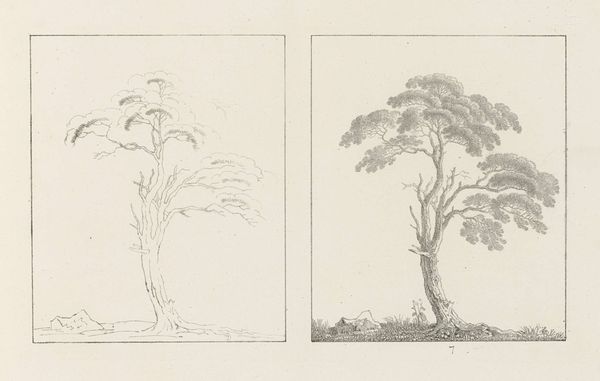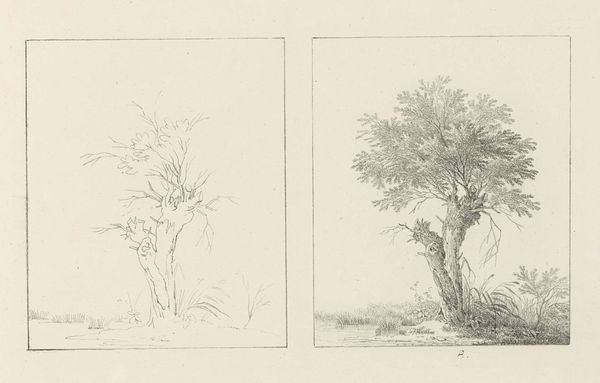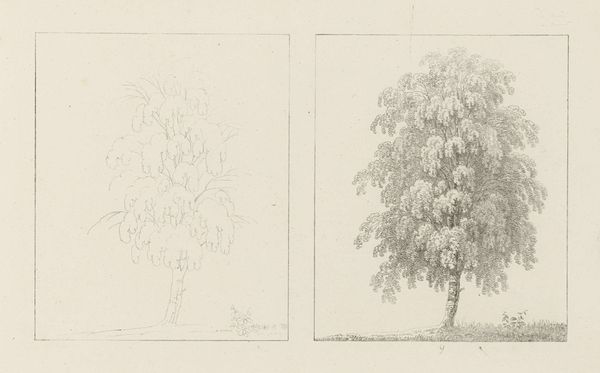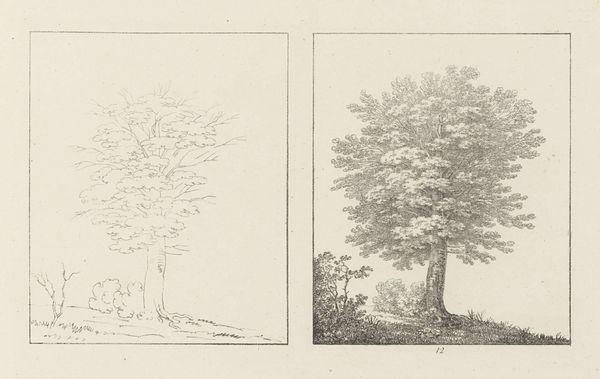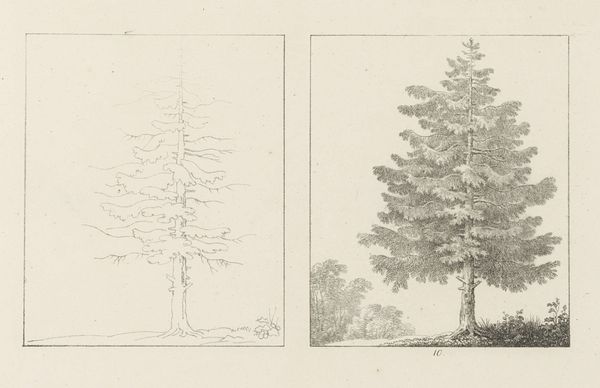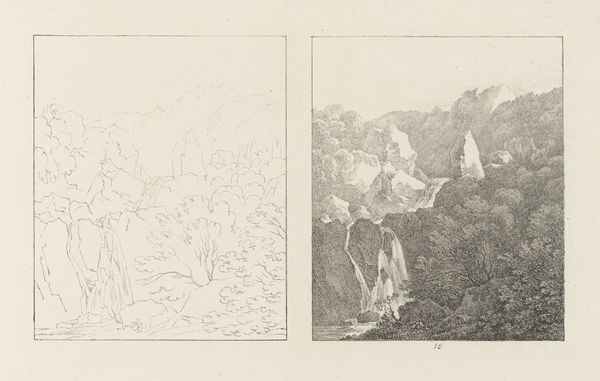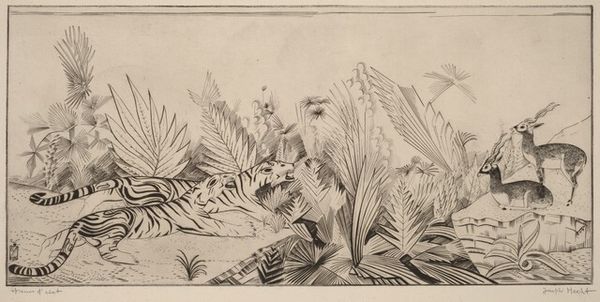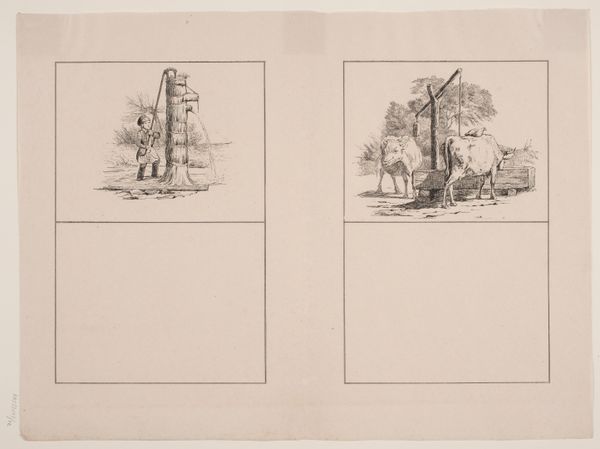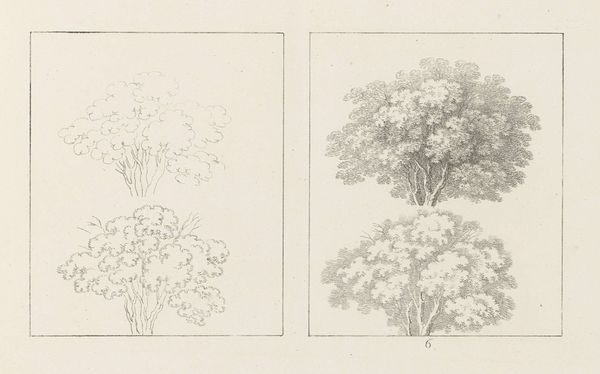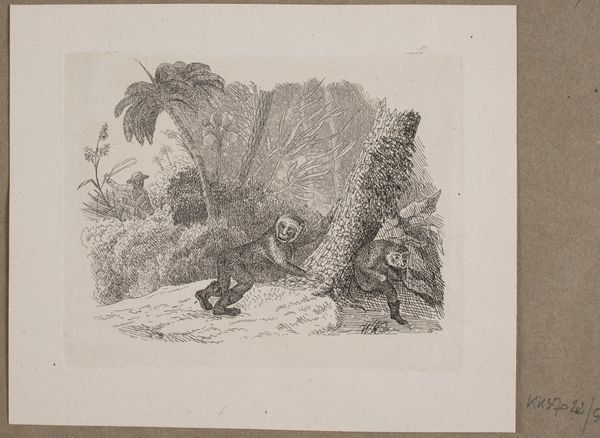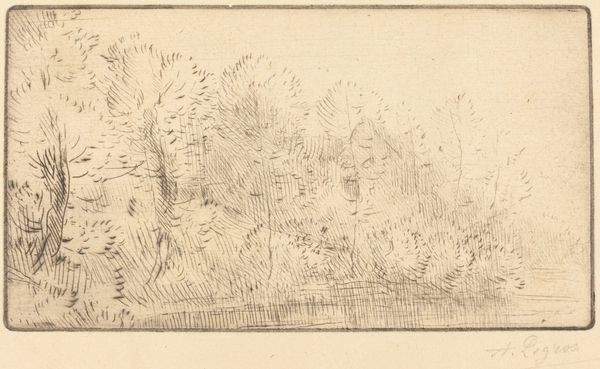
Albumblad met twee voorstellingen van twee treurwilgen: links het ontwerp, rechts de uitvoering 1816
0:00
0:00
drawing, pencil
#
drawing
#
landscape
#
romanticism
#
pencil
Dimensions: height 317 mm, width 460 mm, height 205 mm, width 170 mm
Copyright: Rijks Museum: Open Domain
Editor: This drawing, "Albumblad met twee voorstellingen van twee treurwilgen" from 1816 by Max Josef Wagenbauer, depicts two weeping willow trees using pencil. What strikes me is the contrast between the sparse outline of the left tree and the fully rendered version on the right. How do you interpret this diptych? Curator: I see a dialogue here between intention and realization, reminding us that artmaking is never neutral. Consider the weeping willow, often linked to mourning and sorrow within European Romanticism. Wagenbauer, working in a time of political upheaval following the Napoleonic Wars, may be reflecting on themes of loss. Editor: So the incomplete sketch on the left... Curator: Represents perhaps the initial, raw feeling of sorrow? Then the fully realized tree on the right could symbolize the attempt to process that emotion, to give it form and meaning. Look at the careful shading, the individual leaves articulated. It's a visual representation of working through grief. Who do you think grief most affected during this era? Editor: Given the wars, I would guess mostly women. Perhaps wives, mothers and sisters of the fallen soldiers. Curator: Exactly. And consider too how the traditionally feminine association of nature provided a space for expressing those sentiments when social discourse limited their agency. The artistic act becomes a quiet but powerful act of defiance against imposed silences. Editor: That shifts my understanding entirely. I initially saw the contrast as purely technical, but now I see a powerful commentary on societal constraints and emotional processing. Curator: It’s precisely this interplay between form, content, and context that enriches our engagement with art. Keep questioning established narratives! Editor: I will, and thank you – this has completely changed how I see Wagenbauer’s work.
Comments
No comments
Be the first to comment and join the conversation on the ultimate creative platform.
